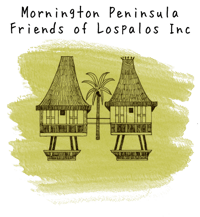- Home >
- Timor-Leste
Timor-Leste
Find out about the region
Timor-Leste is a country in Southeast Asia. It forms half the island of Timor with Indonesia's West Timor. Australia is the country's southern neighbour, separated by the Timor Sea, 45 minutes from Darwin.
Timor-Leste was colonised by Portugal in the 16th century until 28 November 1975, when Fretilin declared the territory's independence. Nine days later, it was invaded and occupied by Indonesia. In 1999, following the United Nations-sponsored act of self-determination, Indonesia relinquished control of the territory. Timor-Leste became the first new sovereign state of the 21st century on 20 May 2002.
Geography
Located in Southeast Asia, the island of Timor is part of Maratime Southeast Asia. Much of the country is mountainous. The climate is tropical and generally hot and humid. It is characterised by distinct rainy and dry seasons. The capital, largest city, and main port is Dili, and the second-largest city is the eastern town of Baucau. The northern coast is characterised by a number of coral reef systems that have been determined to be at risk.
Economy
Timor-Leste has revenue from offshore oil and gas reserves, but little of it has gone to develop villages, which still rely on subsistence farming. Nearly half the population lives in extreme poverty. Timor-Leste is labelled by the International Monetary Fund as the “most oil-dependent economy in the world”. The Timor-Leste Petroleum Fund pays for nearly all of the government's annual budget. The economy is dependent on government spending and, to a lesser extent, assistance from foreign donors. Private sector development has lagged due to human capital shortages, infrastructure weakness, an incomplete legal system, and an inefficient regulatory environment. After oil and gas, the second largest export is coffee, however, the country is only ranked 40th for coffee production in world. Starbucks is a major purchaser of East Timorese coffee.
Languages
Education
In the short period since the restoration of independence, in 2002 Timor-Leste has made significant progress by completely rebuilding its education system. More and more children and young people are now going to school. But ageing facilities, repetition and dropout, language diversity, weakened child-friendly teaching methods and limited facilities in rural areas hinder progress. Children in rural areas are disproportionately affected. Only 20 percent of preschool-aged children in Timor-Leste are enrolled in school. Nearly 37 percent of rural youth (15-24) are illiterate, compared to just six percent in urban areas. Sixty-six percent of basic education schools do not have functioning toilets. Forty percent of basic education schools do not have drinking water.
